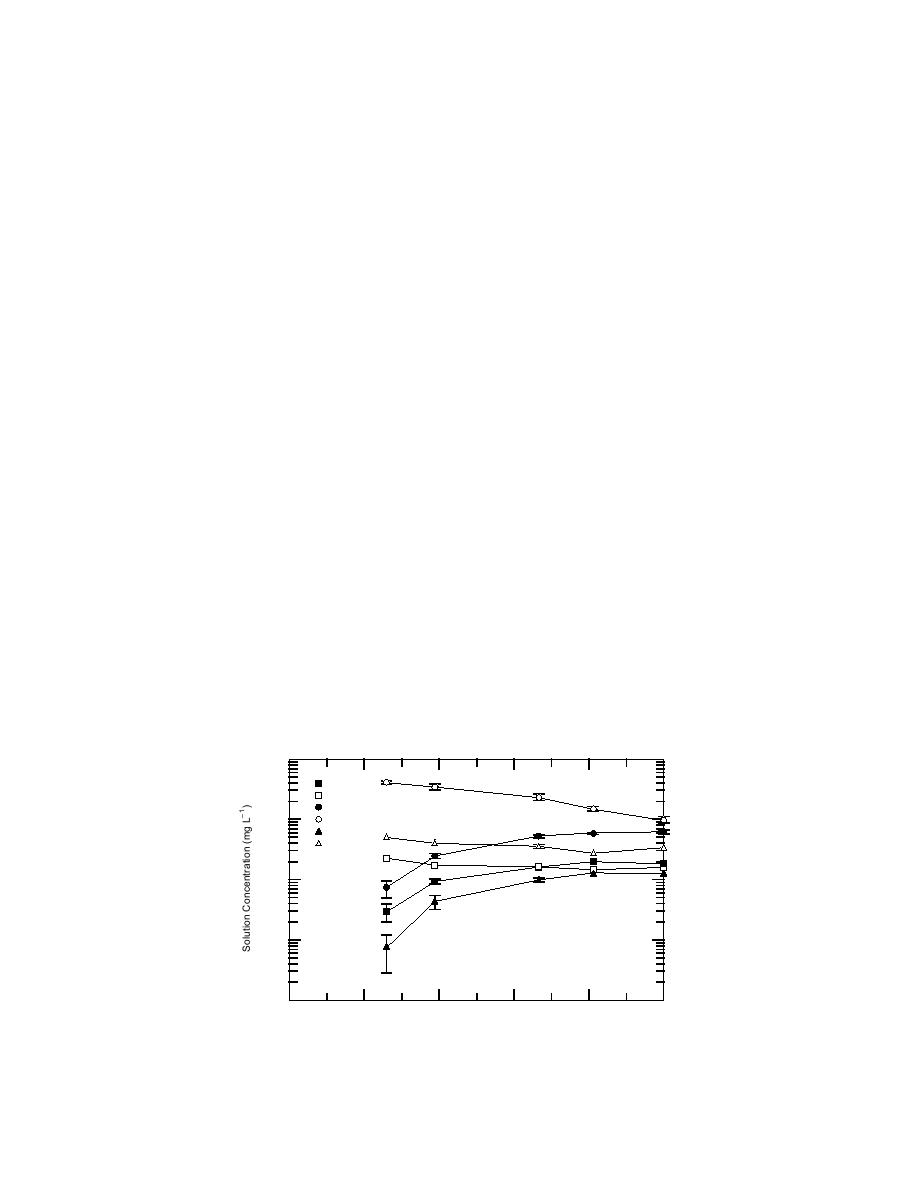
Solid phase concentrations
of the experiment, the frozen layer occasionally moved
At the end of the experiments the soil chambers were
upward in the chamber. On Days 3031, T2 was frozen
sliced into eight layers (Fig. 1) that were analyzed for
in all four chambers (Fig. 2). T2 in Chamber 2 was
RDX, picric acid, TNT, and explosives transformation
frequently frozen.
products.
Of more concern than movement of the frozen zone
In Treatment 1 (aqueous addition of explosives), sig-
upward was thawing downward. At the beginning of
nificant amounts of RDX and picric acid were recov-
the experiment (Days 13), temperatures measured at
T3 were >0C in all chambers. This short-term thaw
ered in the unfrozen layers (Fig. 4a,c). There was little
TNT recovered in the soil samples. No TNT degrada-
occurred when warmer soil was packed on top of the
tion products (TNB, amino-DNT) were detected, sug-
frozen base. This was a problem for the field-contami-
gesting that the TNT was either rapidly transformed or
nated soils (Treatment 2) because thawing of the fro-
rendered unextractable. In Treatment 1, there was no
zen barrier allowed movement of explosives from the
significant leaching of explosives into the frozen layer.
upper contaminated soil into what should have been a
In contrast, significant amounts of explosives, espe-
frozen barrier. This was not a problem for Treatment 1,
cially picric acid, leached into the frozen layers in Treat-
where explosives were introduced in the aqueous phase
ment 2 (solid phase addition of explosives) (Fig. 4b,d).
for the first time on Day 13 (Table 3) after the cham-
This was readily apparent even without chemical anal-
bers had refrozen (Fig. 2).
yses, as the frozen layers were colored by the telltale
yellow of picric acid. This leaching was probably due
Aqueous phase concentrations
to thawing of the frozen soil layer when the contamin-
The concentrations of RDX, TNT, and picric acid in
ated, unfrozen soil layers were placed in the chambers
the periodic aqueous extractions in the columns of Treat-
above the frozen soil. Although thawing also occurred
ment 1 slowly increased during the experiment (Fig.
in Treatment 1, this occurred before the explosives were
3). In Treatment 2, aqueous extract RDX, picric acid,
added; by the time the explosives were added (Day 13),
and TNT concentrations slowly decreased. By the end
the soils had refrozen (Fig. 2). Also in contrast to Treat-
of the experiments, all aqueous phase explosives
ment 1, Treatment 2 retained significant amounts of
concentrations ranged from 10 to 100 mg L1. For both
TNT in the contaminated soil layers (Fig. 4b,d). Note
treatments, the greater solubility of picric acid relative
the difference in scale between Treatments 1 and 2; there
to RDX and TNT was apparent in the higher concentra-
was an approximately 4.6-fold greater amount of explo-
tions of picric acid in the aqueous extracts. There was
sives in Treatment 2 than in Treatment 1 (Fig. 4).
little variability within the two replicates as judged by
the low standard errors, especially in the later samplings
(Fig. 3).
1,000
RDX-1
RDX-2
PA-1
100
PA-2
TNT-1
TNT-2
10
1
0.1
0
20
40
60
80
100
Day of the Experiment
Figure 3. Concentrations of RDX, picric acid, and TNT in the aque-
ous extractions.
5



 Previous Page
Previous Page
